Gravitational potential Energy near the surface of the earth
We have already discussed the notion of potential energy as being the energy stored in the body due to its position and configuration. We attach the concept of potential with only conservative forces like electrostatic, gravitational force etc.
If we change the position or configuration of the system its potential energy would change. An external force has to do some work on the system to change the position of the configuration of the system. Actually, this external work done by the external force gets converted into the potential energy of the system.
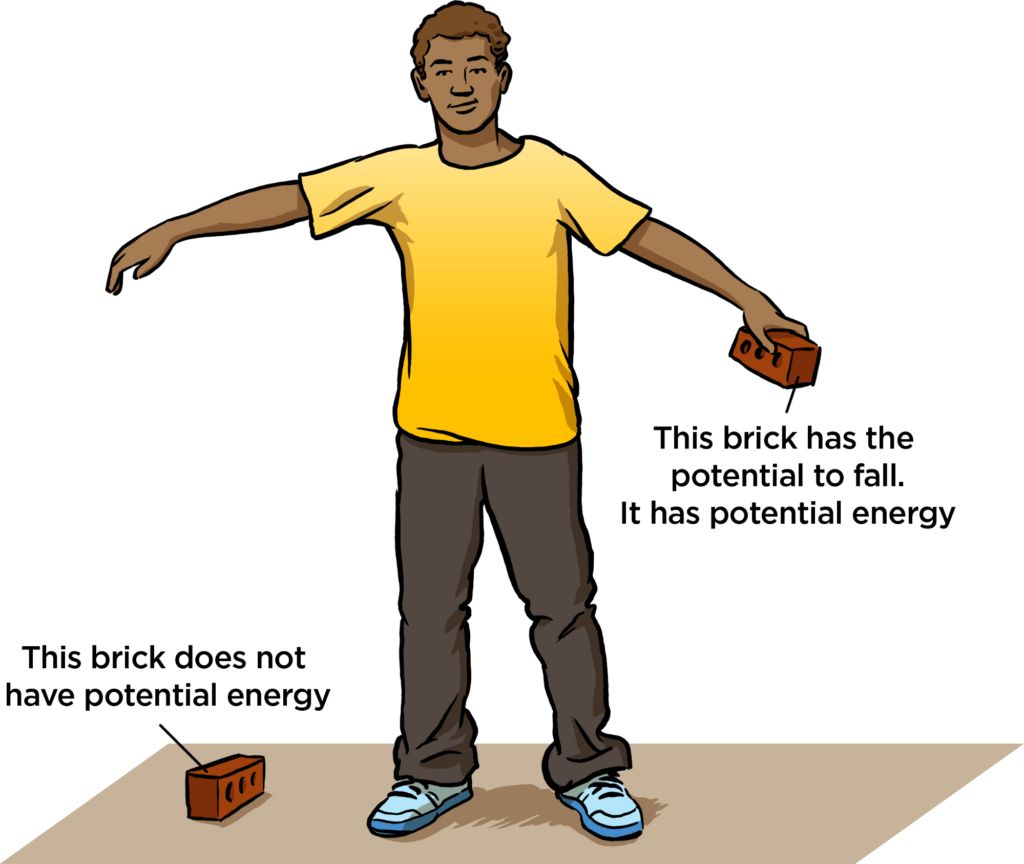
The force of gravity is a conservative force and we can calculate the potential energy of the body arising due to this force, called gravitational potential energy.
Potential energy of the object of mass ‘m’ at height ‘h’ near the earth's surface is given by
Where P.E (0) is the potential energy of the object at the surface of the earth which is a constant.
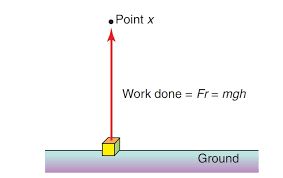
If we are only interested in knowing the change in potential of the object when we lift the object from the surface to height ‘h’ then we actually drop the constant term and simply write
Suppose we have an object of mass ‘m’ kept at height ‘h1’ from the surface of the earth. If we try to lift that object to a height ‘h2’ from the surface of the earth, we need to do some work against gravity.
Work done in lifting the particle of mass m from the first to the second position is denoted by W12.
The work done in moving the particle is just the difference of potential energy between its final and initial positions (change in potential energy)
Gravitational potential energy at an arbitrary distance
If we wish for the gravitational potential energy at an arbitrary distance from the surface of the earth (not near the earth), then we cannot use the above-discussed formula P.E= mgh, as this is not valid here since the assumption that the gravitational force mg is a constant is no longer valid.
However, from our discussion, we know that at a point outside the earth, the force of gravitation on a particle directed towards the center of the earth is ![]()
Where r is the distance of the object from the center of the earth.
Me= mass of earth and m= mass of the object.
If we wish to move the object from a distance r1 to a distance r2 from the center, an external force has to do some work against the force of gravitation
The negative sign indicated a bound state.
When we take an object of mass m from infinity (r1) into the gravitational field of massive object M at a distance ‘r’ (r2) from the center of the object of mass M.
When the work is done in doing this will be,
This work is stored in the form of the potential energy of the system.
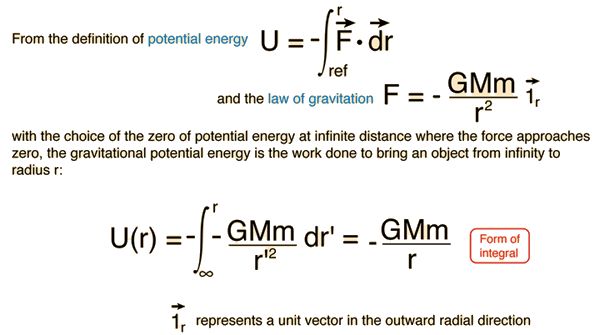
Gravitational Potential energy due to a system of masses
When we wish to calculate the potential energy of a system of masses, for example, three masses at the corner of an equilateral triangle etc. We need to find the work done by the external force in assembling the system of mass. As the work done by the external force in assembling the masses at their respective positions. For example
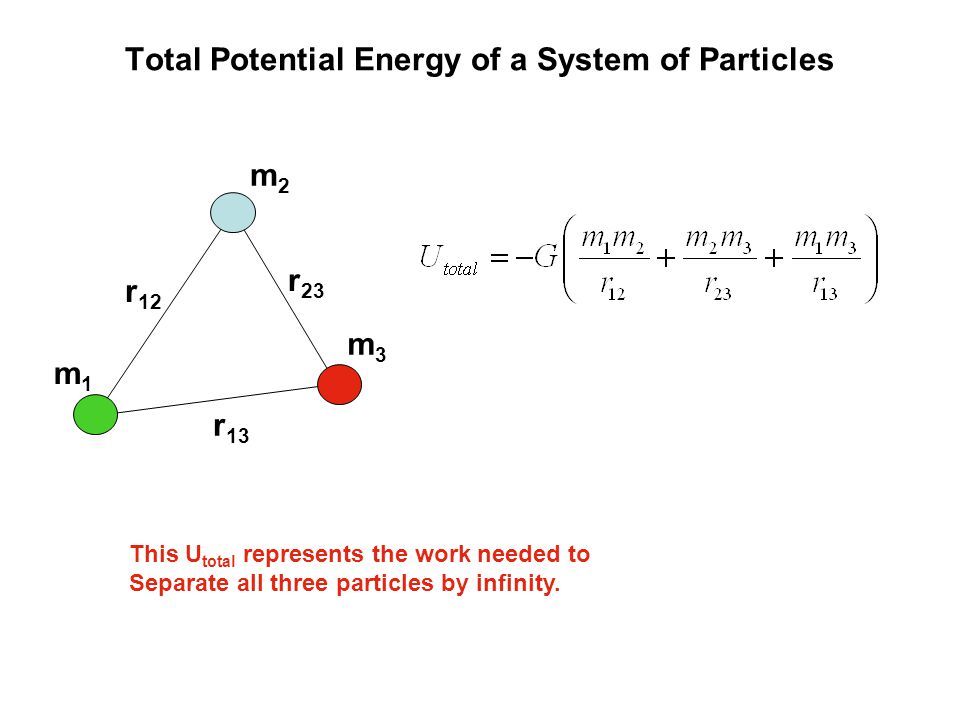
Escape velocity

All of us have experienced that when we throw anything from earth, it eventually falls back on earth. Greater the speed of throw would be, the higher the object can go and then return back to earth. This happens because the gravitational pull of the earth pulls the object back on earth.
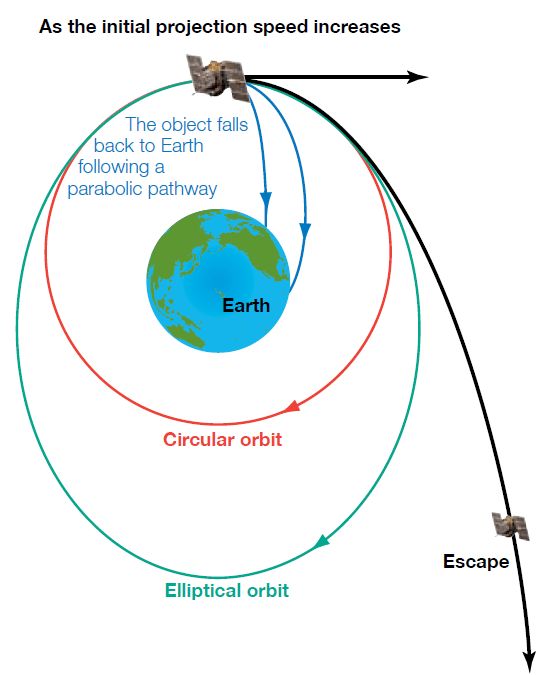
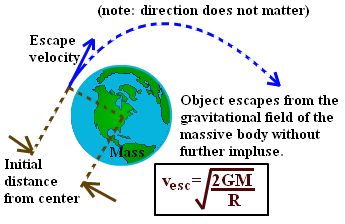
Now the question is with what speed the object should be thrown so it would never come back to earth again and just escape the earth's gravitational field. That velocity would be the escape velocity of the earth.
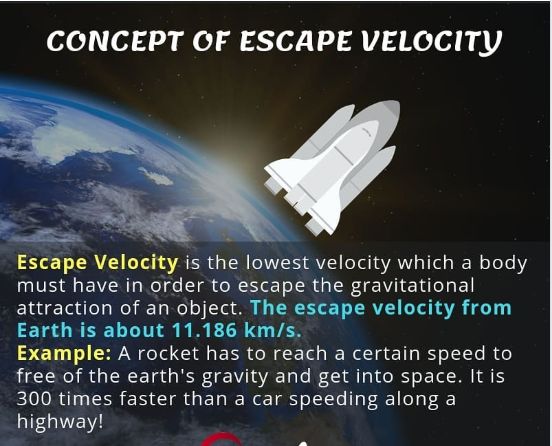
While calculating the escape velocity, we make use of the concept of mechanical energy conservation.
Let the initial mechanical energy of the rocket at the surface of the earth would be
![]() ... 1
... 1
We assume that when the object just escapes the gravitational field of the earth its final gravitational potential energy would be zero. And to calculate the minimum escape velocity we assume that the object just stops after escaping the gravitational field of the earth so its final kinetic energy would also be zero.
According to the principle of conservation of mechanical energy
So, ![]()
Therefore we have escape velocity ![]()
![]() from the surface of the earth. The numerical value of the escape velocity from the surface of the earth =11.2 km/hr.
from the surface of the earth. The numerical value of the escape velocity from the surface of the earth =11.2 km/hr.
If we want to calculate escape velocity from the surface of the moon then M would be the mass of the moon and R= radius of the moon.
Since the gravitational pull of the moon is very less compared to the gravitational pull of the earth, escape velocity from the surface of the moon is about five times smaller than the escape velocity from the surface of the earth. Acceleration due to gravity on moon ![]()
So escape velocity at surface of moon = ![]() = 2.3 km/s
= 2.3 km/s
The smaller value of escape velocity is the reason that the moon has no atmosphere. Gas molecules if formed on the surface of the moon having velocities larger than this will escape the gravitational pull of the moon.
In general for any planet of radius ‘r’ and mass ‘M’ we have the value of escape velocity.
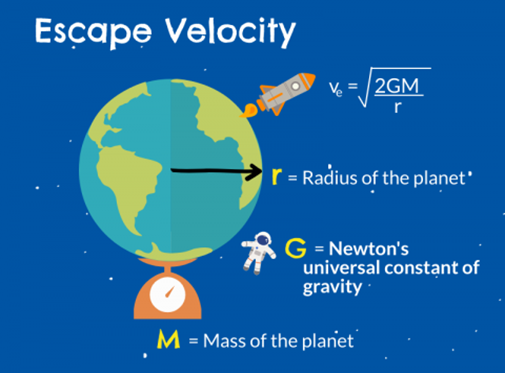
If the object was to be thrown out of the gravitational pull of the earth from a height ‘h’ above the surface of the earth, then the initial distance of the object from the center of the planet will be r= R+h for this case. Therefore escape velocity would be ![]() from a height ‘h’ from the surface of the earth.
from a height ‘h’ from the surface of the earth.
You will notice that as the distance from the center increases, escape velocity decreases.
Orbital velocity
Earth is surrounded by various satellites hovering miles above our heads. Our own moon also remains above the planet at all hours. But why don’t these objects come crashing down onto the planet’s surface? After all, other items in the sky, like an airplane or a hot air balloon, will eventually crash down if they run out of power. The reason that man-made satellites and the moon do not come crashing down is because they have achieved orbital velocity.
Did you know that space missions like GPS satellites, geosynchronous satellites, etc. are possible only because of the correct calculations of the orbital velocity?
The word "orbit" is defined as the path a body follows when being acted upon by the force of gravity. For example, a communications satellite follows an orbital path around the Earth and the Earth follows an orbital path around the Sun.
Orbital velocity, a velocity sufficient to cause a natural or artificial satellite to remain in orbit. The inertia of the moving body tends to make it move on in a straight line, while gravitational force tends to pull it down. The orbital path, elliptical or circular, thus represents a balance between gravity and inertia.
For a satellite of mass m to move around a planet of mass M around a circular path at a distance ‘r’ from the center of the planet with a constant speed ‘v’, there is a requirement of centripetal force. This centripetal force is provided by the gravitational pull of the planet on the satellite.
So we have ![]()
So we have an orbital velocity ![]()
![]()
If the satellite is at altitude ‘h’ above the earth’s surface then r= R+h
So ![]() )
)
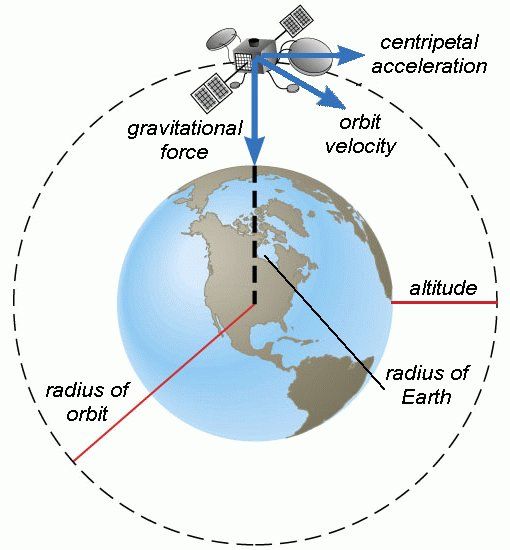
It is clear that orbital velocity is inversely proportional to the square root of the radius of the orbit. As we go far from the planet, orbital velocity decreases.
The time period of revolution of the satellite in orbital radius at height ‘h’ above the earth's surface is given by![]()
For a satellite very close to the surface of earth h can be neglected in comparison to R, so we can approximate ![]() =
=![]()
After putting the value of ![]() and
and
Numerical value of the Time period of a satellite near the surface of the earth is equal to 85 minutes.
Energy of the orbiting satellite.
The total energy of the orbiting satellite of mass ‘m’ would be the sum of kinetic energy and potential energy of the satellite.
The kinetic energy of the satellite in the orbit would be = ![]() , where vo be the orbital velocity of the satellite in that orbit.
, where vo be the orbital velocity of the satellite in that orbit.
![]() …1
…1
The potential energy of the satellite in an orbit at a height ‘h’ above the surface of the earth would be given as,
If we add P.E. and K.E. we will get the total energy of the orbiting satellite
![]()
Points to be noted:
- The Total energy of the orbiting satellite is negative which tells us that the satellite is in a bound state with the planet.
- The total energy of an orbiting satellite is half the value of its potential energy.
![]()
- The absolute value of the total energy of the orbiting satellite is equal to its kinetic energy.
Geostationary Satellite and polar satellites
Geostationary satellites
As the name suggests geostationary, is a satellite that appears to be located at a fixed point in space when viewed from the earth’s surface. This is possible when the time period of the satellite in the orbit matches the rotation time of the earth about its own axis which is 24 hours.
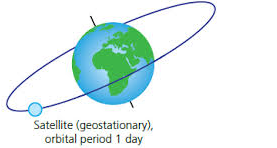
![]() = 24 hours if we put the value of G, M and R and try to calculate altitude h, you will get something close to 36000 km.
= 24 hours if we put the value of G, M and R and try to calculate altitude h, you will get something close to 36000 km.

A geostationary satellite is in an orbit that can only be achieved at an altitude of 35,786 km (22,236 miles) precisely and which keeps the satellite fixed over one longitude at the equator.
It is known that electromagnetic waves above a certain frequency are not reflected from the ionosphere. Waves used in television broadcasts or other forms of communication have much higher frequencies than critical frequency and thus cannot be received beyond the line of sight. A Geostationary satellite, appearing fixed above the broadcasting station can however receive these signals and broadcast them back to a wide area on earth. The INSAT group of satellites sent up by India are one such group of geostationary satellites widely used for telecommunications in India.
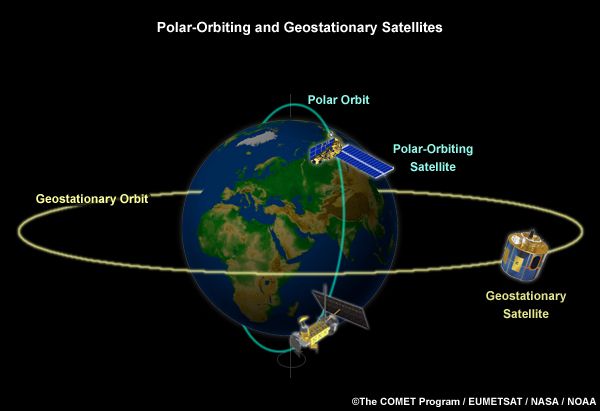
Advantages of Geostationary satellites
- A single geostationary satellite is on a line of sight with about 40 percent of the earth's surface. Three such satellites, each separated by 120 degrees of longitude, can provide coverage of the entire planet
- The geostationary orbit has the advantage that the satellite remains in the same position throughout the day, and antennas can be directed towards the satellite and remain on track.
- The geostationary orbit is used by many applications including direct broadcast as well as communications or relay systems.
- Satellites are always in the same positions relative to earth so antennas do not need re-orientation.
Disadvantages of geostationary satellites.
- Satellites are more costly to install in geostationary orbits in view of its greater altitude.
- Geostationary satellite's orbits can only be above the equator and therefore the Polar Regions cannot be covered.
- Long path length introduces delays and also some losses in the signal.
- The signal travel delay is about 120ms in one direction. The distance of 35786 Km gives 120 ms latency with 3x108 m/sec speed of the signal. Hence it is not suitable for point-to-point applications requiring time-critical applications such as real-time voice, video etc.
Polar satellites
Polar Satellite - A polar orbit is one in which a satellite passes above or nearly above both poles of the body being orbited on each revolution. It, therefore, has an inclination of (or very close to) 90 degrees to the equator.
Polar satellites are also known as sun-synchronous satellites orbits adobe the earth at about 700-1700 km and its orbital period is about 100 minutes.
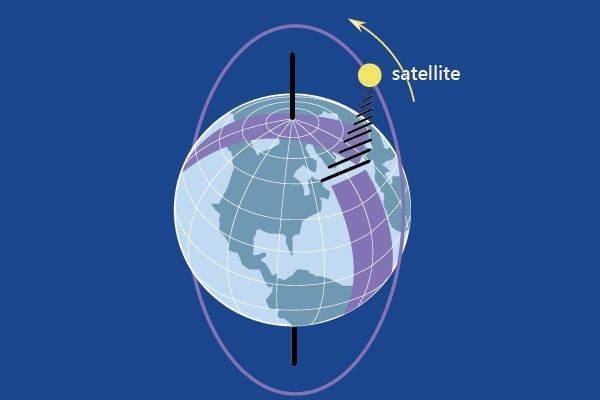
Advantages of polar satellite
- Polar orbits are often used for earth-mapping, earth observation, capturing the earth as time passes from one point, reconnaissance satellites, as well as for some weather satellites.
- Since the orbit is lower for the geostationary satellites, the data resolution is higher and losses and delays are minimal.
- They provide global coverage of climate studies.
Disadvantages of solar orbits
Cannot provide continuous viewing of one location and it is not geostationary.
Weightlessness
Weightlessness is a term used to describe the sensation of a complete or near-complete absence of weight. Astronauts orbiting the Earth often experience the sensation of weightlessness. These sensations experienced by the orbiting astronauts are the same sensations experienced by anyone who has been temporarily suspended above the seat on an amusement park ride. The causes of the sensation of weightlessness in both these cases are the same.
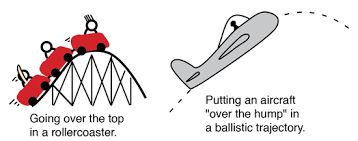
Weightlessness is a sensation experienced by an individual where there are no external objects touching one’s body. In other words, the sensation of weightlessness exists when all contact forces are removed. These sensations are common to the state of free fall.
During free fall, the only force acting on the body is the force of gravity. As gravity is a non-contact force, it cannot be felt without any opposing force. This is the reason why you feel weightless when in a state of free fall.
In a satellite around the earth, every part of the satellite has an acceleration towards the center of the earth which is exactly the value of the earth’s acceleration due to gravity at that position. Thus in the satellite, everything inside it is in a state of free fall. This is just as if we were falling towards the earth from a height. Thus, in a manned satellite, people inside experience no gravity. Gravity for us defines the vertical direction and thus for them, there are no horizontal or vertical directions, all directions are the same. Pictures of astronauts floating in a satellite show this fact.
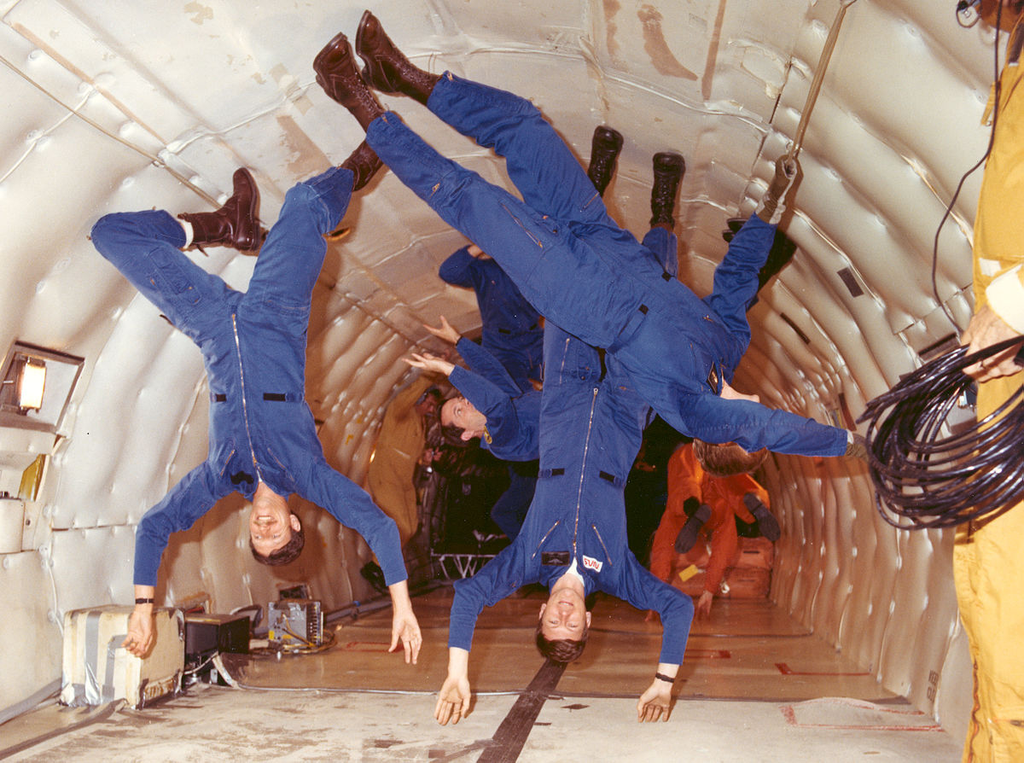
A fun thing to do: Virtual lab
Below is the link of the simulation of gravity and orbits
In this simulation, we can see the orbit of a celestial body around another massive celestial body (Sun, earth, moon and artificial satellite here)
What can we do following things in this simulation?
- We can choose our system between the given options ( Sun, earth, moon), ( Sun, earth), ( Earth, moon), ( Earth and artificial satellite)
- We can change the masses of the body of the chosen system.
- We can switch on or off the gravity and see how the object will move.
- We can select options like grid, Force vector, velocity vector etc.,
- We can also zoom in and out of the screen.
What will we observe in this simulation?
- After selecting the system and enabling the option like force vector, velocity we can see the direction of force and velocity of the body.
- After clicking on the Play button, the lesser massive body will orbit around the massive body and we can see the path traced by the body.
- When the body is moving, we can see how the direction of velocity is changing.
- Also, we can see the time taken by the body to move one complete revolution.

 Madhava Publications
Madhava Publications
